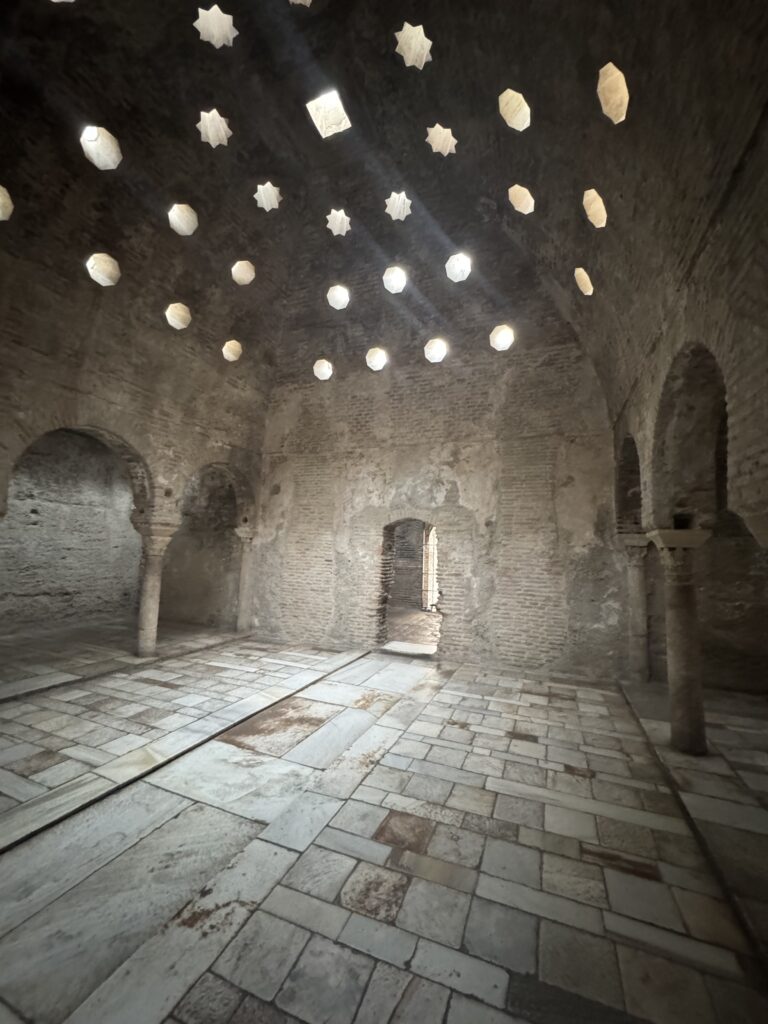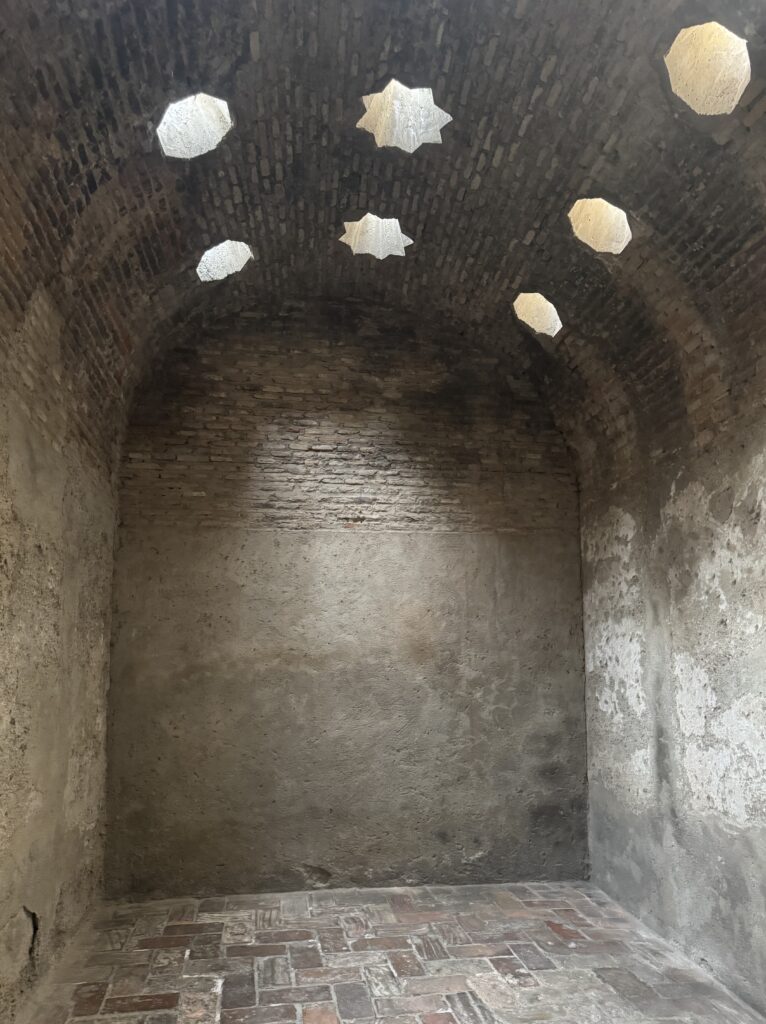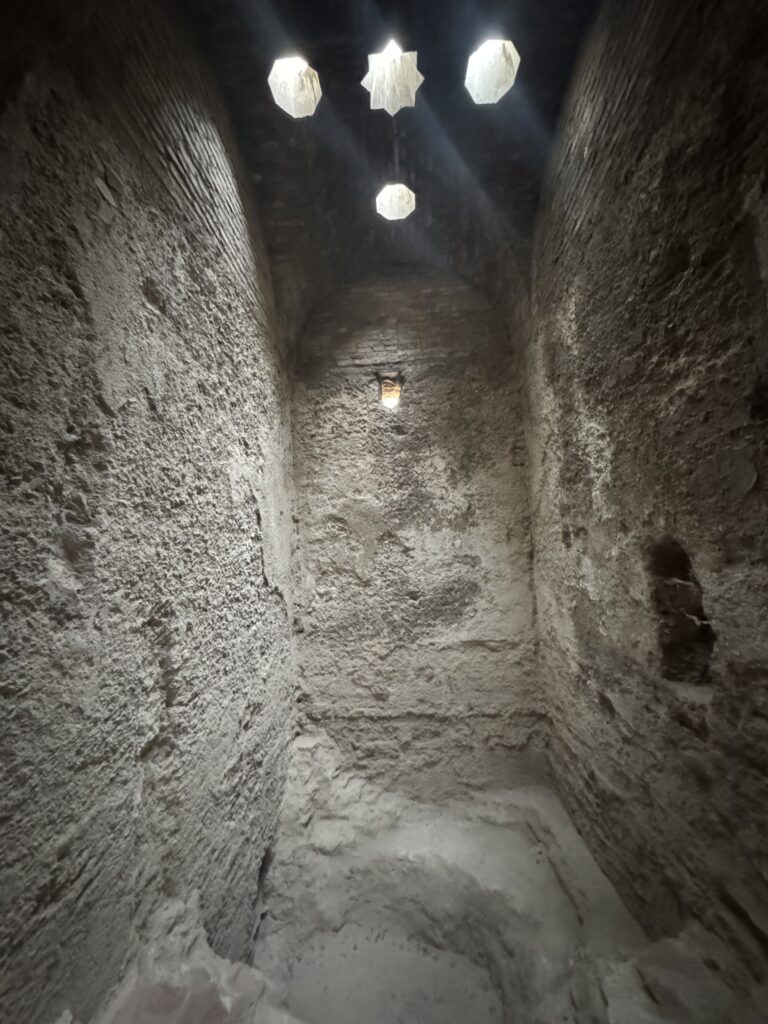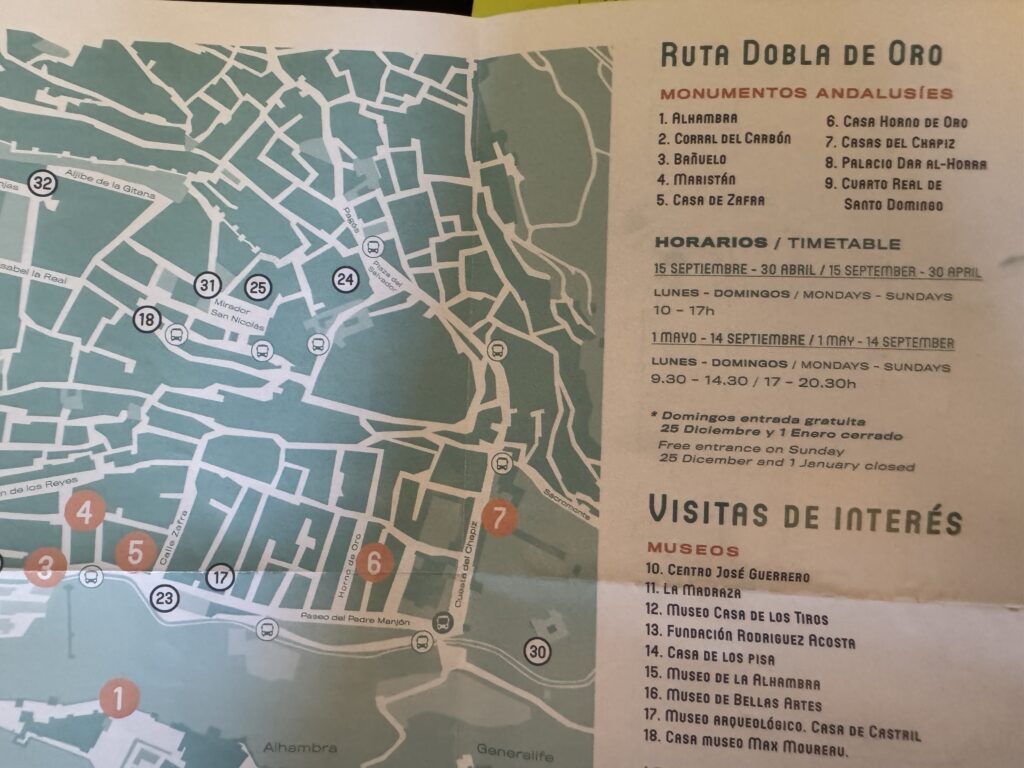El Banuelo, Granada, Spain
El Bauelo , also called Hammam Al-Yawza, is the best-preserved historic hammam from the Al-Andulus on the Iberian Peninsula and resides in Granada, Spain. This is the oldest civil building ad one of the oldest works of Muslim Granada. (citation: https://www.lovegranada.com/monuments/banuelo/….) This site is a public arab bath that is an example of a place where physical and spiritual cleansing happened daily between the 12th – 16th century, during Muslim rule of the area. It was constructed originally around the reign of the Zirid dynasty and is characterized by the use of concrete walls. The Christian conquest of Granada happened in 1492, and the bathhouse as stated continued to be used until the 16th century, and this was one of the few buildings spared from destruction of the Christian Monarchs. (Citation: https://www.alhambra-patronato.es/…/andalusi…/el-banuelo) It’s location is on an important road called Carrera del Darro that is very close to the Alhambra, one can see it right outside the El Banuelo, on the hill (of Sabika) directly adjacent across the Darro River.

The Albaicin neighborhood of Granada, is like winding back the clock, with narrow alleyways and houses that comprise a Moorish medieval history. There are several important sites that are linked to the Alhambra and Generalife, and the El Banuelo is one of them that is designated as a UNESCO Heritage Site in 1994 thanks to extensive preservation efforts performed on these structures to save their important history. This site was built several centuries before the Alhambra, though! These arab baths are at the foot of the Alhambra and mark the start of the Albaicin. There were originally shops nearby, and churches, many houses, whitewashed, and often characteristically adorned with flowers, and the Carmenes or villas surrounded by gardens (a more opulent version of residences in the Albaicin). The Banuelo is accessed through a small house, and sadly could almost be missed from the street. Upon entering the Hammam portion, I was amazed that the the entry threshold was only a little taller than I am at 5’2″!

This Hammam during the time of Al-Andalus, had 21 arab baths. (citation: https://www.andaluciamia.com/…/albaicin-in-granada…/) The baths have a traditional order in the chambers, frigidarium (cold) , tepidarium (warm) and caldarium (hot) which are baths of varying degrees of increasing warmth from cold to hot, sequentially. The most striking and beautiful part of this building is the pierced skylights of stars and octagons on the vaulted ceiling which resemble constellations in the sky. This also allowed for ventilation of the bath spaces, as well. The arched colonnades form rooms within the Hammam, separating areas from one another, the columns are topped with capitals with motifs from Roman, Visigothic and Caliphate origins. The horseshoe arch is characteristic of the Visigoth style of architecture. (Citation: https://en.granada.info/banuelo) The act of bathing oneself at a Hammam consisted of purification of the body through the baths and providing hygienic care. But outside of just hygiene, the baths provided a space for social, political and business meetings in Granada as one of the main public buildings of its time.

I was very fortunate to be in Granada on a Sunday, when the monuments of the Albaicin are free to enter. I visited three of them and felt transported back in time as the neighborhood provides a look back on Granada’s rich past, it’s medieval labyrinthine streets, the courtyard villas and preservation of its Islamic heritage. There is a strong sense of community and culture of a village in the Albaicin, where a visitor can take in a panoramic view of the Alhambra from below.
